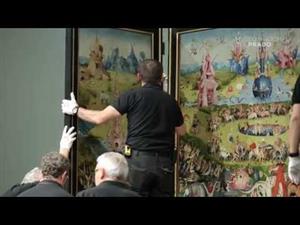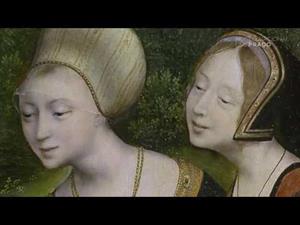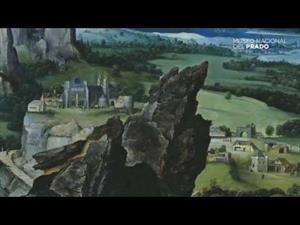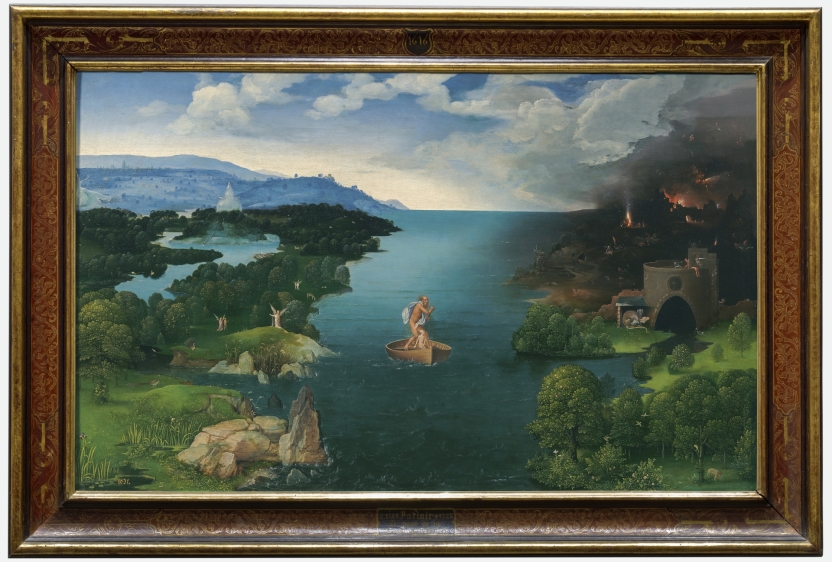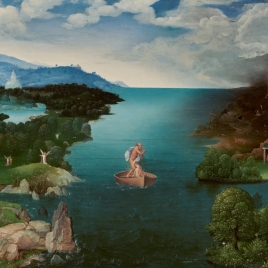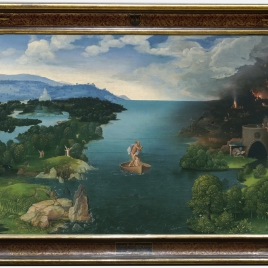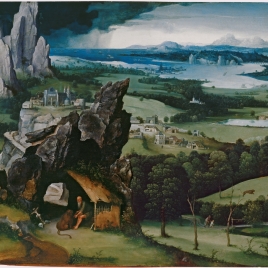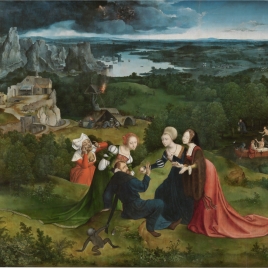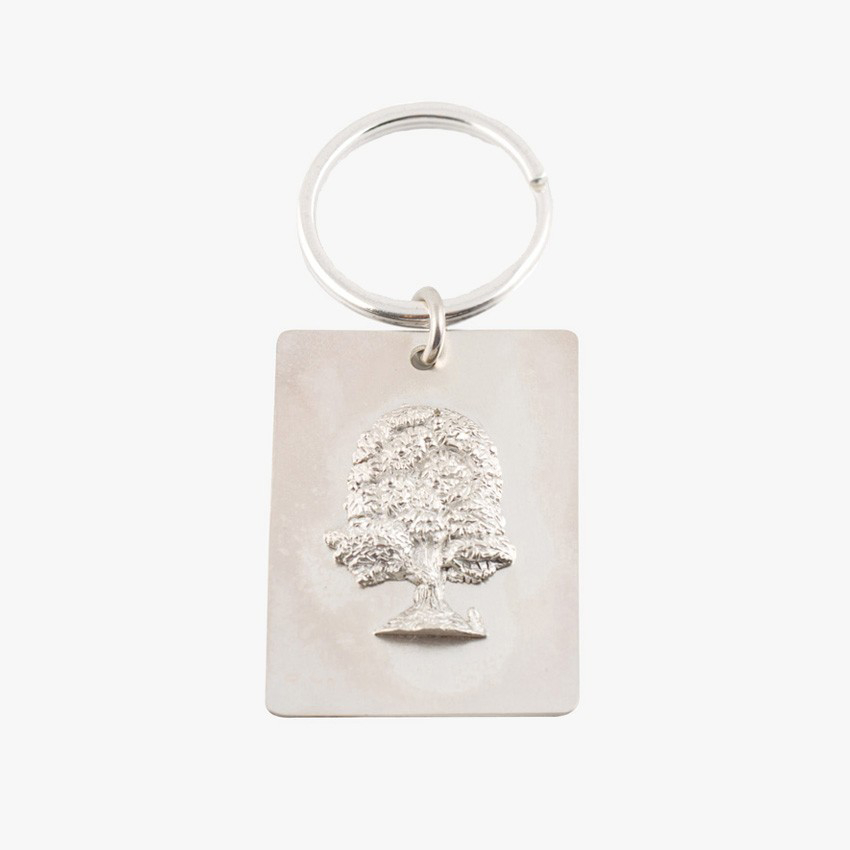Charon crossing the Styx
1520 - 1524. Oil on panel.Room 055A
In addition to the originality of its subject, this painting by Patinir is also remarkable for its unusual composition within Patinir`s oeuvre. The artist has divided the space vertically into three zones, one on either side and the third occupied by the broad river in the centre, on whose opaque and mirror-like surface Charon steers his boat. For the iconography of this subject, Patinir draws together biblical images and classical sources. An angel on the promontory, another two accompanying the souls not far away, and a few more with other tiny souls in the background allow us to recognize the paradise on the left as a Christian heaven, not the Elysean Fields. On the other hand, the dog Cerberus seems to identify the inferno shown on the right as Hades, thus associating it with Greek mythology, as do Charon and his boat.
The painter places the scene at the moment when Charon has reached a point mid-way between the channels opening on either side of the Styx. Each man, or in this case each human soul, is responsible for choosing their ultimate destination when the hour of death arrives. Patinir shows the soul in strict profile, with the face and body turned towards the easy path to perdition, indicating that the choice has been made.
This idea was expressed in the late Middle Ages by a whole range of metaphors, both biblical and classical. Out of all of them, Patinir appears to have taken his prime inspiration from St Matthew`s Gospel. There is no doubt that Patinir here reflects the pessimism of his turbulent times, with the Protestant Reformation gaining momentum after the appearance of Martin Luther`s Ninety-Five Theses in Wittenberg in 1517. Patinir thus converts this work into a memento mori, a reminder to all those who contemplate it that they must prepare for the moment of death, and that the hard road must be chosen in imitation of Christ, ignoring false paradises and deceitful temptations.
It is not known what prompted Patinir`s patron to commission a work like this from him, or where it was destined to hang. Evidently, though, it is not an altarpiece but a cabinet painting, proper to a milieu with humanist leanings. For want of a pre-existing model, the painter, no doubt aided by a client or mentor, took earlier representations of heaven and hell as sources for his paradise and purgatory. Those of Bosch in particular were decisive throughout the creative process and final execution. X-rays and infrared reflectograms reveal the changes undergone by his initial concept, which are quite plentiful in paradise, with its fantastic structures evoking Bosch`s Garden of Earthly Delights (Museo del Prado, P2823) and thereby giving the picture surface a much more Boschian appearance than the drawing. Even more important, however, are the changes made to Patinir`s purgatory, though the surface in this case owes less to Bosch than the underlying drawing. The gigantic demon visible from the bank is eliminated, and the foreground becomes a false paradise facing the reefs which obstruct the entrance to the true one. This balances the picture, expressing the idea of the soul at a crossroads in a more conceptually convincing way. Furthermore, when the painting is viewed as a whole, it is once again the landscape which predominates. Whether borrowings or evocations, the influences of Bosch are minimized by reducing the number of demons and damned souls, and by scaling them down in size -like the angels, the chosen ones and the animals in paradise- until they are barely perceptible in the background. Regarding authorship, both the drawing and the handling of the colour layer point to an autograph work executed by Patinir without collaborators, since the central figure of Charon displays the painter`s own characteristic hallmarks.
The exact chronology of the painting is difficult to determine. It doubtless belongs to the painter`s last period before his death, which almost certainly befell him in 1524. If we try to narrow the date down further, the characteristics of the drawing and the tremendous care taken over the surface execution suggest a date nearer the conclusion of Patinir`s middle period, since it has points in common with the later works from that phase. This would perhaps indicate a date of around 1520, and so probably earlier than the Landscape with the Temptation of St Anthony in the Prado (P1615) and the Landscape with St Christopher at El Escorial (Silva, P.: Patinir. Essays and critical catalogue, Museo Nacional del Prado, 2007, pp. 150-163).



